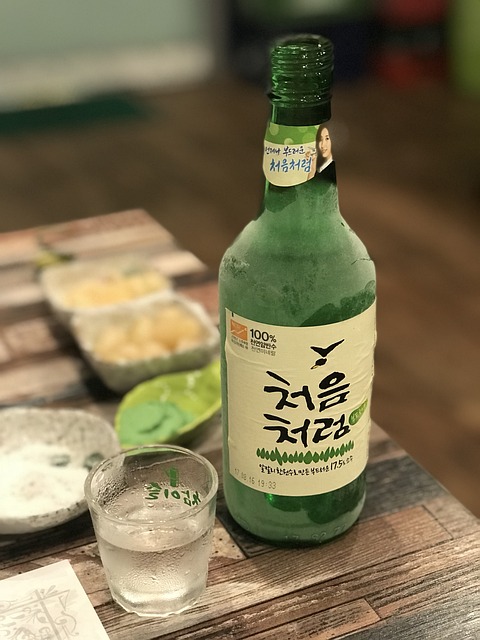Taste Test: Contrasting the Flavor Profiles of Sake and Soju
Soju and sake are two popular Asian alcoholic beverages that have gained global recognition in recent years. While they may appear similar at first glance, there are distinct differences between these two drinks in terms of production methods, taste profiles, and cultural significance.
In this article, we will delve into the difference between soju and sake including the unique characteristics of each, exploring their origins, ingredients, and the ways in which they are enjoyed.
Whether you are a seasoned connoisseur or simply curious about the world of Asian brewed alcohol, understanding the difference between soju and sake will enhance your appreciation for these beloved libations.
Understanding Sake and Soju
Both soju and sake are iconic beverages in their respective cultures. They have unique identities shaped by centuries of tradition, local ingredients, and distinct production methods.
On the other hand, sake, Japan’s famed ‘rice wine’, presents a broader spectrum of flavors – fruity to savory – all depending on the type of rice used and brewing techniques applied during its creation.
One of the main differences between soju and sake strictly uses polished rice as an ingredient; however, sometimes fruit is added for more characterful expressions. Unlike soju which undergoes distillation post-fermentation, sake remains undistilled making each sip complex yet delightful.
Soju, originating from Korea, often draws comparisons to vodka due to its clear appearance. But it’s a touch sweeter, showcasing a subtle yet engaging flavor profile that complements various Korean dishes.
Differently from many spirits like whiskey or rum which are distilled after fermentation, soju goes through this process before. The primary ingredient isn’t exclusively rice but can also include wheat or barley.
A Note on Pairings:
- If your palate craves sushi rolls with wasabi heat or grilled yakitori skewers? A glass (or two) of sake should do the trick.
- If you’re savoring some tangy kimchi stew or spicy stir-fried pork belly? Reach out for that bottle of soju.
The Ingredients Used in Sake and Soju
When it comes to ingredients, both soju and sake rely heavily on rice. But there’s more to these beverages than just that simple grain.
Sake, a traditional Japanese drink, uses exclusively polished rice as its main ingredient. The type of rice used can vary but is often a special variety known as sakamai or “sake rice”. It has larger grains with starch concentrated at the core. This unique characteristic allows for optimal fermentation by koji mold – an essential part of sake production.
Beyond the primary ingredients though are other additions that help shape each beverage’s final taste profile: water quality affects flavor subtly; yeast strains dictate aroma notes; while enzymes break down complex carbohydrates into fermentable sugars — all crucial elements contributing to their parts during fermentation processes of either drink.
Flavor Profiles of Soju and Sake
Another difference between soju and sake is the flavor profile. The taste journey with soju begins with a clear, neutral profile. It’s somewhat like vodka but leans towards the sweeter side. The distinct character is derived from its distillation process post-fermentation which allows it to adopt various flavor profiles.
Moving onto sake, we dive into a broader spectrum of flavors – ranging from floral and fruity to savory notes. The difference here lies in its brewing method where rice plays an exclusive role.
Unlike distilled spirits such as soju, sake gets its unique characteristics during fermentation without any subsequent distillation. Sake School Of America’s course gives you an opportunity to delve deeper into this traditional Japanese beverage.
- Fruity sakes often pair well with lighter foods such as sushi or salads,
- Savory ones could complement heartier dishes like stews or grilled meats beautifully.
To enjoy these drinks at their best, make sure they are served chilled for the most refreshing tasting experience.
Food Pairings with Sake and Soju
The right food pairing can lift your Soju or Sake experience to a whole new level. Both these beverages have unique flavor profiles that pair beautifully with specific foods.
Sake Food Pairings
In contrast, Sake’s broader spectrum of flavors ranging from floral to savory, makes it a versatile partner for many Japanese dishes. It works wonderfully well with sushi, sashimi as well as grilled fish. The fruity notes in some types of sake even complement desserts like matcha ice cream.
To elevate your tasting experience at home or when dining out next time, remember these pairing tips. They’ll not only enhance the taste but also deepen your appreciation for these iconic Asian spirits.
Soju Food Pairings
Soju, with its clear and neutral profile, pairs well with spicy Korean dishes like kimchi jjigae (kimchi stew) or samgyeopsal (grilled pork belly). Its subtle sweetness helps balance the fiery flavors of Korean cuisine.
Popularity and Consumption Trends
Soju and Sake, each hailing from Korea and Japan respectively, have seen a steady rise in global popularity. This surge is not just confined to their home countries but extends worldwide.
Sake’s complex flavors too have been making waves outside of Japan. A report by the National Tax Agency of Japan revealed that sake exports had doubled over the past decade. Food enthusiasts are pairing it with more than just sushi.
In 2018 alone, Soju sold more than 76 million cases globally, outstripping other spirit sales. Its clean taste has resonated with an international audience seeking lighter alcoholic beverages.
This rising tide for both soju and sake can partly be attributed to increased cultural exchange between East and West thanks largely to food tourism, Korean dramas, and anime culture influencing Western audiences’ palate.
Learn More at the Sake School of America
If you’ve got a passion for sake and soju, why not take it to the next level? The Sake School of America can turn your interest into expertise. We offer courses that delve deep into these unique beverages.
No prior knowledge is necessary. The school will provide all the support you need to get started. We welcomes learners at all levels. A key part of our program is becoming a Certified Sake Adviser. You’ll learn everything there is to know about both sake and soju, right down to production methods and flavor profiles.This certification can also open doors in food service or retail industries where specialist knowledge is highly valued. To start exploring this fascinating world further, check out the range of courses offered by Sake School Of America. Let’s toast (or should we say kanpai?) to new beginnings.


